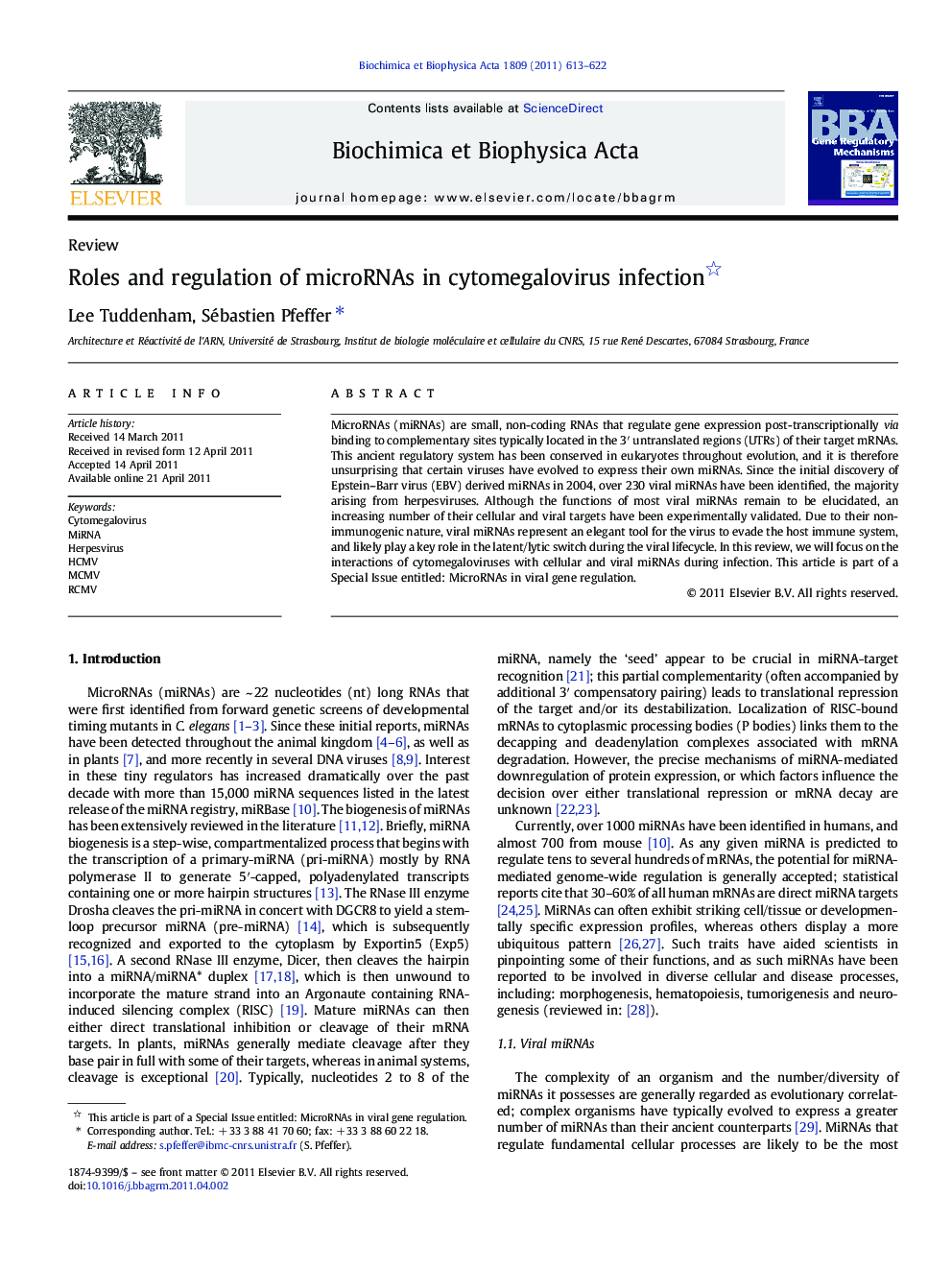| Article ID | Journal | Published Year | Pages | File Type |
|---|---|---|---|---|
| 1946602 | Biochimica et Biophysica Acta (BBA) - Gene Regulatory Mechanisms | 2011 | 10 Pages |
MicroRNAs (miRNAs) are small, non-coding RNAs that regulate gene expression post-transcriptionally via binding to complementary sites typically located in the 3′ untranslated regions (UTRs) of their target mRNAs. This ancient regulatory system has been conserved in eukaryotes throughout evolution, and it is therefore unsurprising that certain viruses have evolved to express their own miRNAs. Since the initial discovery of Epstein–Barr virus (EBV) derived miRNAs in 2004, over 230 viral miRNAs have been identified, the majority arising from herpesviruses. Although the functions of most viral miRNAs remain to be elucidated, an increasing number of their cellular and viral targets have been experimentally validated. Due to their non-immunogenic nature, viral miRNAs represent an elegant tool for the virus to evade the host immune system, and likely play a key role in the latent/lytic switch during the viral lifecycle. In this review, we will focus on the interactions of cytomegaloviruses with cellular and viral miRNAs during infection. This article is part of a Special Issue entitled: MicroRNAs in viral gene regulation.
Research Highlights► Micro (mi)RNAs are small non coding RNAs that regulate gene expression. ► MiRNAs are found in most eukaryotes and in some viruses. ► Cytomegaloviruses encode for miRNAs playing important roles in infection. ► Some cellular miRNAs are regulated during infection. ► Regulated cellular miRNAs can play pro or antiviral roles.
